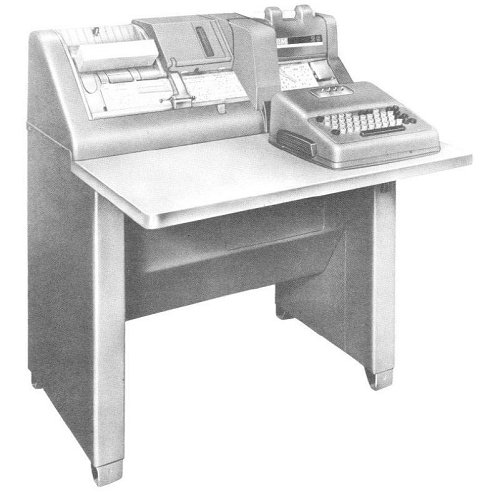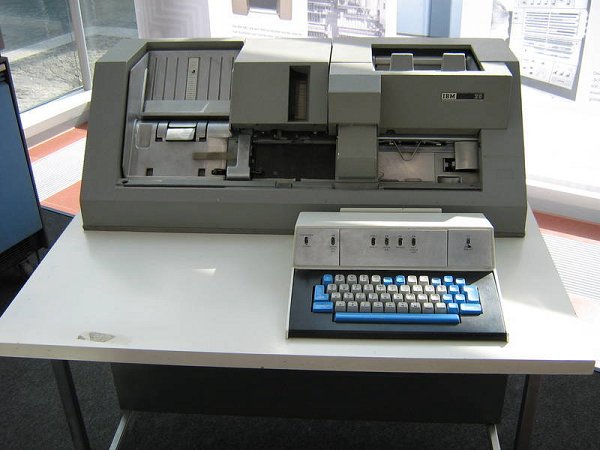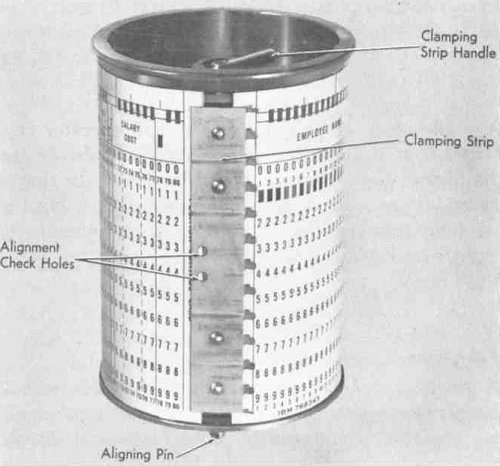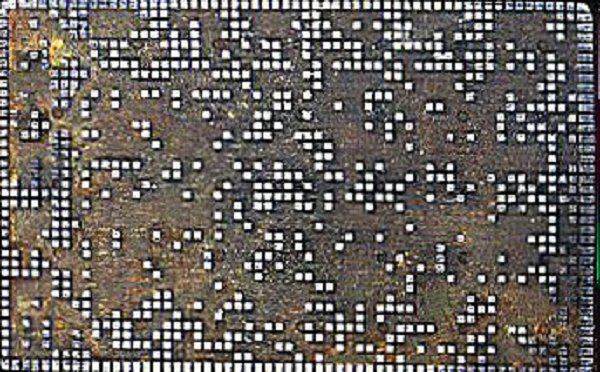
An IBM 026 card punch
Following the two articles on survey analysis software in Resurrection 52 I received much correspondence from readers. As so often, the ensuing discussion wandered about and I was drawn into contemplating the humble IBM 029 card punch. And it struck me that in the late 1960s and ’70s, more or less wherever I went, there would be IBM 029 card punches; sometimes in ones and twos, sometimes in dozens. Even within ICL which operated a ban on the purchase of IBM equipment, the 029 could be found. It was perhaps, the most common piece of computer equipment of its era.

|
An IBM 026 card punch |
The origins of the IBM 029 go back to 1948 when the model 026 card punch was introduced. 1948 of course, was in the pre-computer age, at least as far as IBM is concerned, so we can see that the 026 was designed with the requirements of punched card office machinery in mind. The 026 had an abbreviated QWERTY keyboard supporting upper case alphabetics, numerics, space and &.◊-$*/,%#@ - 48 characters in all. It was able to punch cards, one column at a time, and the character would be simultaneously printed atop the column being punched. There was a cheaper model, the 024, which lacked the printing feature, and a verifier designated 056. Award-winning Art Deco styling was by the famous Raymond Loewy, better known for streamlined railway vehicles and even the 1950s Hillman Minx.
The circuitry of the 026 was a mixture of diodes, valves and relays. With 48V and 150V DC coursing through the machine, spillage of coffee was frowned upon with good reason.

|
An IBM 029 card punch |
A repertoire of 48 characters might have been all very well in 1948 but by 1964, even after a bit of judicious reorganisation, time was running out for the 026. It was System 360 with its eight bit byte and generous EBCDIC character set which forced the introduction of something better. That something better was the 029 punch (and 059 verifier) which, appropriately, supported a 64 character set - not the full EBCDIC set, to be sure, but enough to cover most requirements.
Mechanically similar to its predecessor, the styling was completely revised. Gone were the rounded corners of Loewy’s now dated 024, replaced by a more “cubist”, modern look. Purchase price was reduced from $3,700 to $2,250. Internally the valves were gone and with them the 150V supply. Instead, reed relays and diodes were to be found. The reed relays were not a total success. The customer engineers’ manual warns sternly against rough handling, lest the glass in the relays should break. An early design change to wire contact relays dealt with that.

|
Program Drum |
Typewriters were generally equipped with a rack into which pegs could be inserted. Use of the Tab key would advance the carriage to the next peg position. The 026/029 had a similar mechanism, but instead of a rack, a card upon which encoded instructions were punched was employed. The card was wrapped round a drum which advanced in sync with the card being punched. Shift setting could also be automated as could copying from the previous card. The “program” was prepared by the user on the machine it was intended to control so the scheme appeared delightfully self-referential.
Equally ingenious was the printing mechanism. As each column was punched, the character was printed, dot matrix-style. A 5×7 matrix was employed with up to 35 wires being pressed down onto an ink ribbon (and thence to the card) simultaneously. At the other end of the wires was a postage stamp sized “code plate” with 35×64 (or 35×48) minute pillars protruding from it. Think of an array of tiny, tiny Lego bricks. By milling off most of the pillars, a mechanical, read-only binary store could be manufactured.

|
A Code Plate from an 026 |
As a character was punched, the plate moved to one of 64 positions and then pushed down. Where the pillar was still in situ, the wire would be forced down and a dot printed. Or not, as the case may be. Of course, this mechanism required considerable precision in manufacture and setting up, but then any card punch does, so it was well within IBM’s capability.-
We started by observing that the 029 could be found almost anywhere. IBM installations had them, but so did many others. One of the headaches of those days was that each manufacturer used a different card code. Often a manufacturer used different codes for different ranges of computer. Yet the 029 supported them all. How? Here, I fear, we must enter the realms of speculation. But it is at least informed speculation.
Try as I may, I can find no provision for varying the mapping from keys to hole arrangement. But, since the hole combinations were the same from one code to another - only the meanings varied - swapping the keytops cured half the problem. Which leaves the printing mechanism to be dealt with. But the printing was controlled by the code plate, so fitting a different code plate with a different binary pattern recorded upon it, changes the meaning of each key. You have to admit that’s clever.
The 029 was produced all through the era when rapid growth in the spread of batch data processing was taking place. In the 1970s key-to-tape and key-to-disc equipment began to displace the punch card as the primary data preparation medium, and by 1980, on-line applications had obviated the need for an intermediate stage between the end user and the computer altogether. Legacy systems kept the punched card going for a few more years, but the 029 was withdrawn in 1987. Was it ever bettered? This writer remembers being seriously impressed by the Decision Data 8010. The IBM 129 had a memory buffer so that the card was punched only after the operator signalled its completion, allowing errors to be corrected. But was it really a good idea to further develop the card punch in the 1970s? With hindsight, perhaps not.
How many 029s were made? Nobody seems to know. But we think it runs to hundreds of thousands. Ubiquitous? Oh yes!
I am grateful for the help of Martin Campbell-Kelly, Rod Brown and the IBM Archive in the preparation of this article. The latter’s website at www-03.ibm.com/ibm/history is a useful resource.